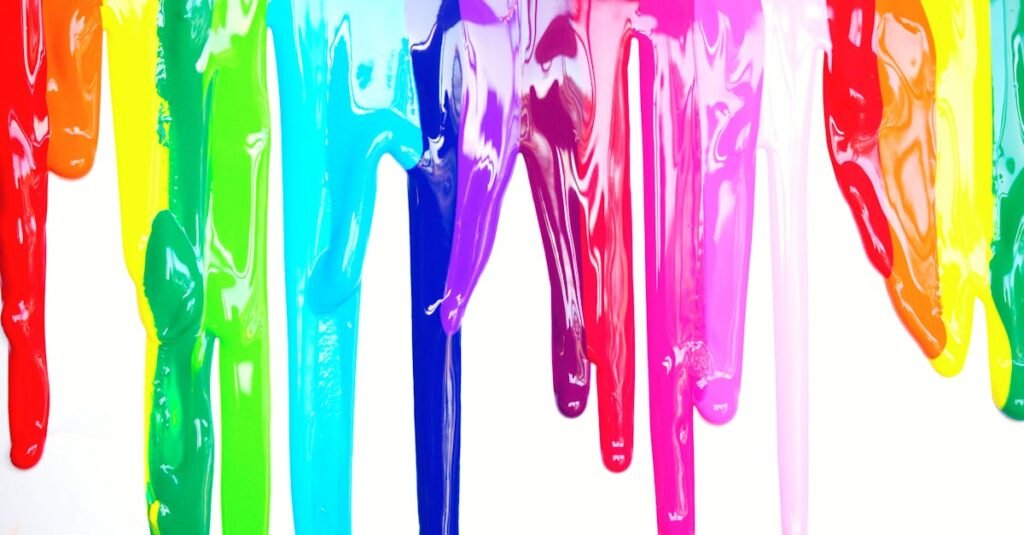Summer is for adventures, and arts and crafts are the perfect storytellers.
Arts & Crafts Ideas for Social & Emotional Growth:
For Fostering Social Skills (Collaboration, Sharing, Communication):
- Collaborative Mural/Giant Drawing:
- Idea: Tape a large sheet of paper (or several smaller ones together) to a wall or floor. Provide various art supplies (crayons, markers, paints) and have multiple children work on the same piece simultaneously.
- Benefits: Encourages sharing of space and materials, negotiation over what to draw where, and non-verbal communication as they react to each other’s contributions.
- Community Collage:
- Idea: Give each child a small piece of paper to decorate individually with a specific theme (e.g., “What makes me happy,” “My favorite animal”). Once complete, combine all the individual pieces onto a larger board to create a collective artwork.
- Benefits: Teaches that individual contributions make up a greater whole, promotes respect for diverse ideas, and encourages discussion about their personal expressions.
- “Exquisite Corpse” Drawing/Story:
- Idea: Each child draws a part of a figure (head, torso, legs) or writes a part of a story on a folded piece of paper, only revealing a small portion to the next person.
- Benefits: Promotes creative collaboration, adaptability, and lots of laughter as they see the unexpected final creation.
For Building Family Connections & Strengthening Relationships:
- Family Storybook/Scrapbook:
- Idea: Work together to create a book about your family’s adventures, memories, or even a fictional story starring family members. Each person can draw pages, write sentences, or add photos and mementos.
- Benefits: Encourages shared storytelling, reflection on positive experiences, and strengthens bonds through a joint creative project.
- “Family Handprint” Art:
- Idea: On a large canvas or piece of paper, each family member adds their handprint in different colors, overlapping or arranged creatively. You can add names and dates.
- Benefits: A simple, tangible representation of family unity and a lasting keepsake.
- Collaborative Sculpture/Construction:
- Idea: Using recycled materials (cardboard, plastic bottles, paper tubes), LEGOs, or even natural elements found outdoors, work together to build a large structure or sculpture.
- Benefits: Requires teamwork, planning, problem-solving, and shared decision-making, fostering a sense of collective achievement.
For Developing Empathy & Understanding Different Perspectives:
- “Feelings Faces” or “Emotion Rocks”:
- Idea: Provide plain paper plates or smooth rocks. Have children draw or paint different facial expressions or abstract representations of emotions (happy, sad, angry, surprised, calm). Discuss what each emotion looks like and feels like.
- Benefits: Helps children identify and understand emotions in themselves and others, building emotional literacy and empathy.
- “Walk in My Shoes” Craft:
- Idea: Have children decorate paper cutouts of shoes. On each shoe, they can draw or write about something that makes them unique, or a challenge someone else might face (e.g., “I feel shy sometimes,” “It’s hard for my friend to share”).
- Benefits: Encourages perspective-taking and understanding that everyone has different experiences and feelings.
- “Kindness Chain” or “Compliment Rainbow”:
- Idea: For a kindness chain, each child writes or draws an act of kindness they did or saw on a paper strip, then links them together. For a compliment rainbow, each color represents a different person, and children write compliments for that person on the corresponding color.
- Benefits: Focuses on positive social interactions, appreciation for others, and recognizing the impact of their actions.
Remember to emphasize the process over the perfect product, and enjoy the creative journey with the kids!
kids who hate arts and crafts
Show thinking
I understand you’re looking for ideas to engage kids who might not be naturally inclined towards arts and crafts, even though the Canvas “Blog Ideas: The Benefits of Arts & Crafts for Kids” highlights their many advantages, including fostering social skills, building family bonds, and developing empathy.
It’s common for some children to be less enthusiastic about traditional art projects. The key is often to adapt the activities to their interests, make them less intimidating, or focus on the process rather than a perfect end product.
Here are some ideas to encourage kids who might “hate” arts and crafts:
- Connect to Their Interests:
- Sports Fans: Create team banners, design team logos, make paper jerseys, or decorate sports equipment (e.g., a plain baseball cap with fabric markers).
- Science Enthusiasts: Try “art experiments” like baking soda and vinegar volcanoes with colored liquid, making homemade slime or playdough, creating lava lamps in a bottle, or exploring chromatography with markers and coffee filters.
- Builders/Engineers: Use cardboard boxes to build forts, robots, or vehicles. Provide various recycled materials (toilet paper rolls, plastic containers) and tape/glue for open-ended construction challenges.
- https://www.makeyourmarkevents.co.uk/post/the-mental-health-benefits-of-participating-in-art


